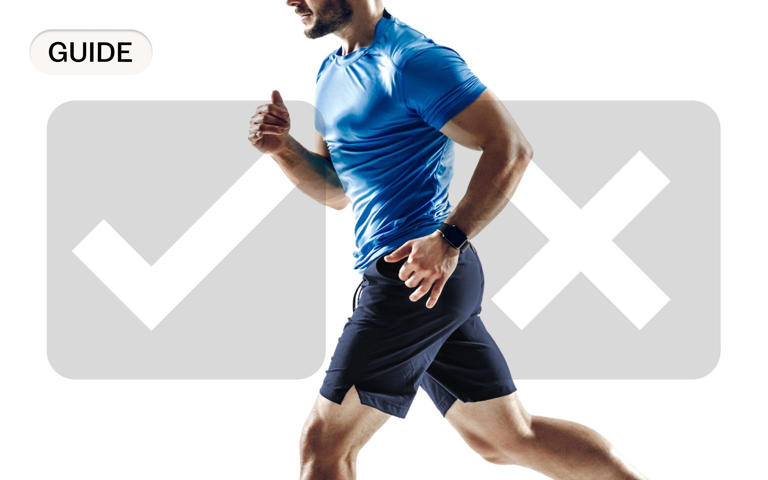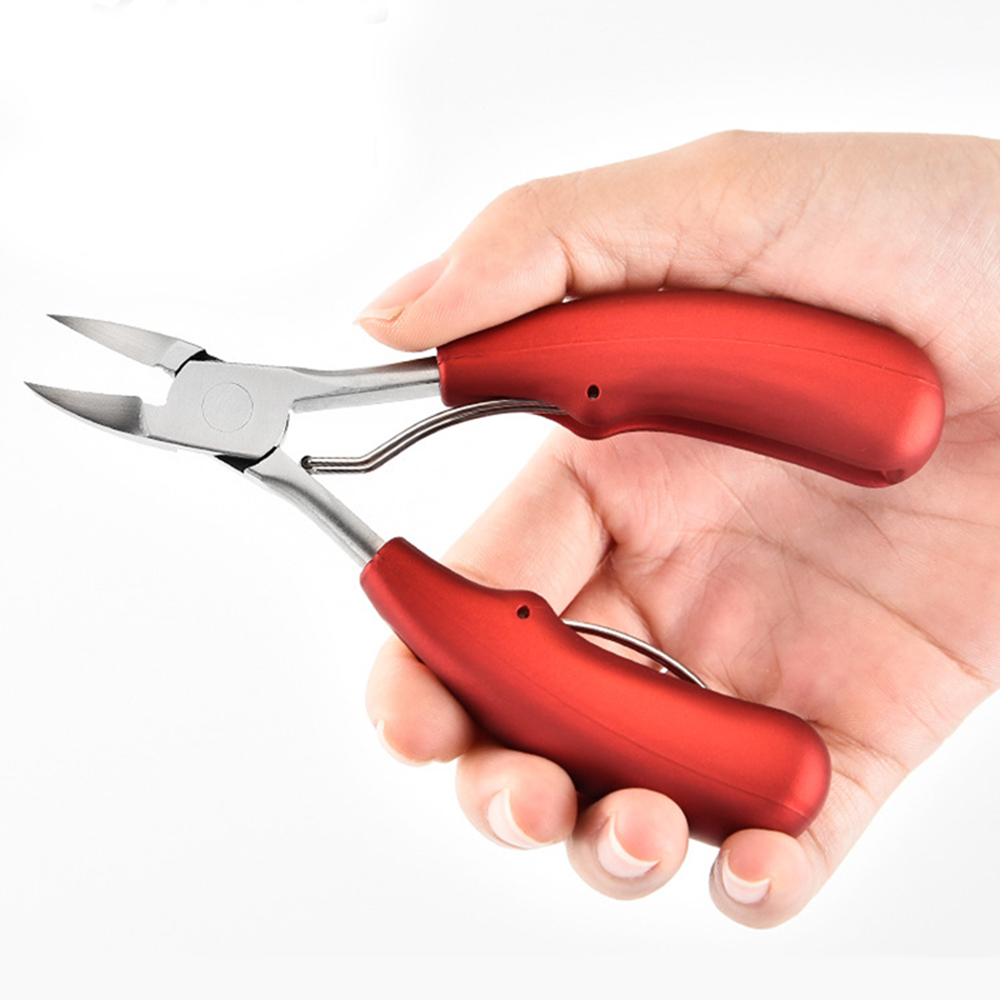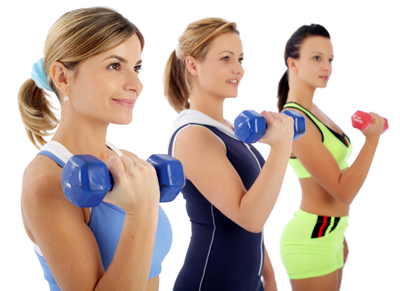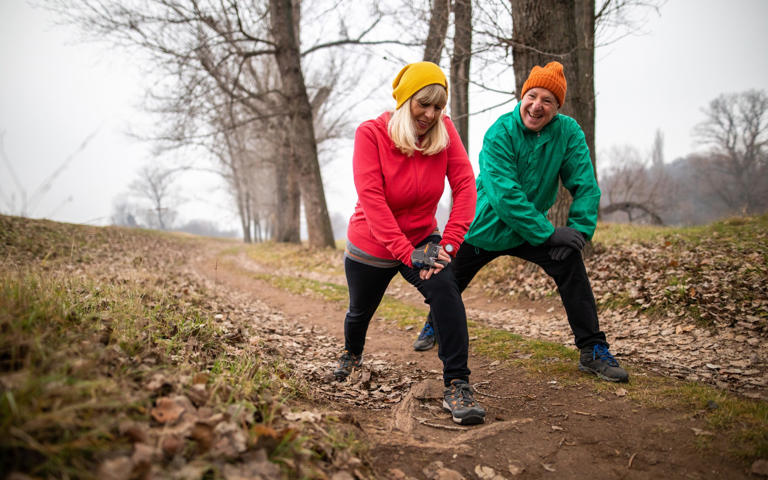The dos and don’ts of running when you’re over 40
![]()
![]()
![]()
![]()
![]()
![]()
![]()
The dos and don’ts of running when you’re over 40

-
I’m not sure why I finally decided to give running a try. I think it was a stealth move by my husband. He has been a runner since his schooldays and even ran the London Marathon 15 years ago, but I’d never been tempted to join him because it was “his” thing. “My” thing, I have always said, is dance. Cue a slightly condescending voice: “Dancing is so much more creative and just as good for you in terms of fitness.Sacrificing half an hour for a run boasts a myriad of health benefits© Provided by The Telegraph
- ” But the truth is I’m now in my mid-50s, and dance has fallen by the wayside because I couldn’t find local classes that suit me. My weight has crept up over the past couple of years, probably because I’m in the throes of menopause, and I needed to make a change. It just so happened that my husband’s physio (he currently has a calf injury) suggested he strengthen it slowly using the popular NHS Couch to 5K app and, for some reason, I decided to join him. And, suddenly, I’m a runner.
-
-
- Community events are also more popular than ever, with Parkrun, which began in 2004, holding more than 1,000 events every weekend across the UK. The average Parkrun time has increased from 22 minutes and 17 seconds in 2005 to 32 minutes and 34 seconds in 2023 as a more diverse range of abilities take part, proving just how inclusive such events have become. Running is no longer the preserve of “proper” athletes, it’s for everyone.
-
-
- Project manager Emma Snead started running at the age of 45 during lockdown. She says, “I live in rural southwest France and was around a size 20 when I started running. You don’t often see many people of that size exercising – especially in France – and I tried not to care, but I did notice people staring. After three weeks of following the Couch to 5K app, I knew I was progressing. I felt better about how I looked and I stopped caring what people thought.”
-
The benefits of running after 40
- Dr Jennifer Wilson is a senior exercise and health practitioner at Nottingham Trent University and a trustee of FiiT for Life, a charity that provides exercise training. She says: “For people returning to or starting exercise, running is a great way to improve health and mental wellbeing. This is particularly true if it is practised outdoors – the benefits of green exercise are well documented.
Running is also recommended for women going through the menopause. Doctor and women’s wellness expert Dr Shirin Lakhani says running is an excellent way to keep some of the symptoms under control. “According to a number of studies, the average weight gain for a woman during and after menopause is around 4.5lb,” she says.The many positives of running include improved heart and lung health and increased joint strength and flexibility© Provided by The Telegraph- “Struggling with excess stomach fat and sudden weight gain is a very common symptom, and running is an effective way to burn calories and maintain a healthy weight. This is essential for managing cardiovascular disease and osteoporosis risk. Weight-bearing exercises like running also stimulate bone growth and increase bone density, reducing the risk of fractures.”
Jemma Arbon, 42, is a running coach at Mansfield Harriers athletics club. She started running for the first time in her mid-30s, and within a year she underwent training so she could start a beginners’ running group. She has gone on to form groups for all ages, and found there was keen interest among older women.- “It’s my mission to encourage women, in particular, to be engaged in sport and fitness,” she says. One of her members, Pauline Beard, started running at the age of 67 in a group of runners in their 60s and 70s. “It really has changed my life. I’ve met so many lovely people. Being outside and enjoying nature is so good for physical and mental wellbeing,” she says.
-
-
The downsides
-
Without wanting to put anyone off getting some fresh air and building up their fitness, there are certain things you should watch out for. Dr Jennifer Wilson explains: “Running can carry with it a high risk of injury because, generally, we take thousands of steps per run. And if that is coupled with a particularly inefficient running technique, it can lead to injury.”
-
- A training plan will help prevent injuries, as will the correct running shoes for your terrain (see more on both below). Brushing up on safety is essential, especially for women. Finding a running buddy is a good idea, make sure your phone is fully charged, and always inform others of the route you’re taking and your estimated return time. A good way to do this can be through a running app, such as Strava, which shares your route in real time with chosen contacts.
-
Running shoes and kit
Once you’ve made the decision to run, it’s worth investing in the proper gear to make your life easier (and, in some cases, safer).
-
-
Get the right pair of running shoes
-
Ideally, you should have your gait analysed at a specialist running shop before purchasing your trainers, which is usually a free service. The analysis will check how your foot strikes the floor and suggest the perfect running shoes to maximise comfort and efficiency. If you can’t visit a shop, some retailers such as
-
Runandbecome have an online service. If all else fails, brands such as Hoka or Asics have products that are recommended by podiatrists. According to Run and Become, you may need a size up from your usual footwear as running trainers are made slightly smaller than everyday shoes, and there should be half a thumb’s width between the longest toe and the front of your shoe.
-
Be seen
When you’re running in the dark or the dusk, make sure you’re wearing as much reflective gear as possible to be visible to drivers. There is a wide range of appropriate kit available, from running jackets to gloves. Nike Dri-FIT, Under Armour and Proviz all have exceptional products.
-
Choose a supportive sports bra
Adidas, Sweaty Betty and Shock Absorber produce some of the best. For a bigger bust, particularly, a wide underband and straps are vital to keep running “bounce”’ to a minimum.
-
Make sure you can see where you’re going
For anyone running in low light – dusk, early morning, winter evenings – a head torch is a must. It should be easy to turn on and off, rechargeable and, of course, comfortable. Biolite and Ledlenser are both well-respected brands.
-
Keep an eye on your stats
Wearing a running watch is a great way to track your progress. A smart watch will measure pace, heart rate, distance and recovery time, as well as fitness levels. Using an app on your phone will work too, but is less accurate (and harder to use) than glancing at your watch while you run.
-
Listen to your body
Dr Jessica Leitch, founder of Run3D, which provides musculoskeletal and gait analysis to injured runners, says it’s vital to factor in recovery time. “When you take up running, you’re putting a lot of load onto the system,” she says. “You are going to take about 1,500 steps to complete a mile, and this causes a small amount of damage to your musculoskeletal system during each run, which we call microdamage. Normally, if you give your body time to adapt and recover, it will strengthen over time.”
-
This becomes ever more important as we age, says Leitch. “As you get older, the key thing to understand is that your body needs more time to recover compared to when you were younger. Listen to your body – it will tell you. ‘OK, this is hurting a little bit too much for comfort. I will take an extra day to recover.’ If you don’t rest, the microdamage that’s being put onto the limbs with every step accumulates and weakens the tissues and then you become more at risk of injuries.”
-
Story by Ally Oliver: The Telegraph:
-
Articles - Latest
- A yoga teacher says this five-minute stretch is all you need to maintain flexibility in your spine
- Can't do a deep squat? Use this coach's four-step plan
- 6 Reasons Your Feet Are So Itchy
- Surprising Benefits of Using Bay Leaves on Your Feet
- I run 50 miles a week and this is my go-to 20-minute yoga-for-runners workout to boost my flexibility
- How to do hanging leg raises with perfect form, according to trainers
- The two exercises everyone should add to their strength workouts to see results, according to an expert trainer
- 1 year of heavy strength training could offer 4 years of benefits, study suggests
- Research Has Unveiled How Many Sets You Need to Do to Build Muscle
- I did 50 frog crunches every day for a week — here's what happened to my abs
- 10 physio-approved exercises for runners that will help you build strength and mobility
- Forget sit-ups — this 3-move standing ab workout chisels your abs and obliques
- What to do when plantar fasciitis is so bad you can't walk
- Five exercises better than side bends to sculpt strong obliques
- Forget Russian Twists — this 10-minute stability ball workout targets your abs and glutes
- Professor explains how we are all doing one exercise wrong and it is causing us pain
- Supplies, Description, and Usage - Tech Nails-2
- Supplies, Description, and Usage - Tech Nails
- Exercises for Plantar Fasciitis
- Shoes, insoles and splints: Cushioning and support - Plantar fasciitis
- 10 best bum workouts and 25 bum exercises for a 🍑'ier butt
- The dos and don’ts of running when you’re over 40
- This 30-minute workout can be done from just about anywhere
- I teach stretching routines for a living — 3 exercises that strengthen your hips and open your hamstrings
- Somatic exercise has gone viral promising to lower cortisol levels, ease stress, and boost health - so, does it actually work?
Articles-Popular
- Home
- Calluses and Corns-4-Padding and Insoles To relieve Pressure
- Add Muscle, Build Stamina and Fire up Your Metabolism with Our Three-Move Strongman Circuit
- The two exercises everyone should add to their strength workouts to see results, according to an expert trainer
- Appreciate Your Feet
- Contacts
- Therapy Price List- Aromatherapy - Counselling
- WEB - LINKS
- The Awareness of Foot Care
- Nail Technician Resume
- Join us as a Therapist
- Blisters on the Feet
- Skin Care-Feet
- Galleries
- TCM - Therapy Prices
- Podiatry/Chiropody Price List
- Bacterial Infections
- Nail Technician Job Description
- Itching Skin on the Feet
- Athlete's Foot
- Sweaty or Smelly Feet
- Gallery - Pedicured Feet
- Appointments
- Calluses and Corns - 2
- Skin Changes Associated with Blood Flow






